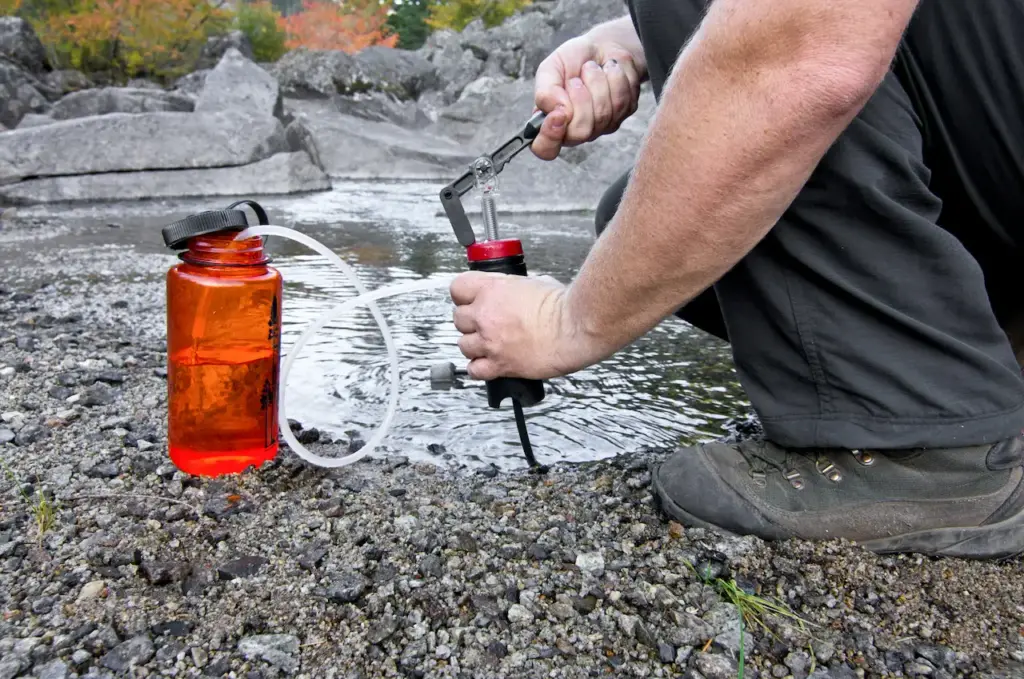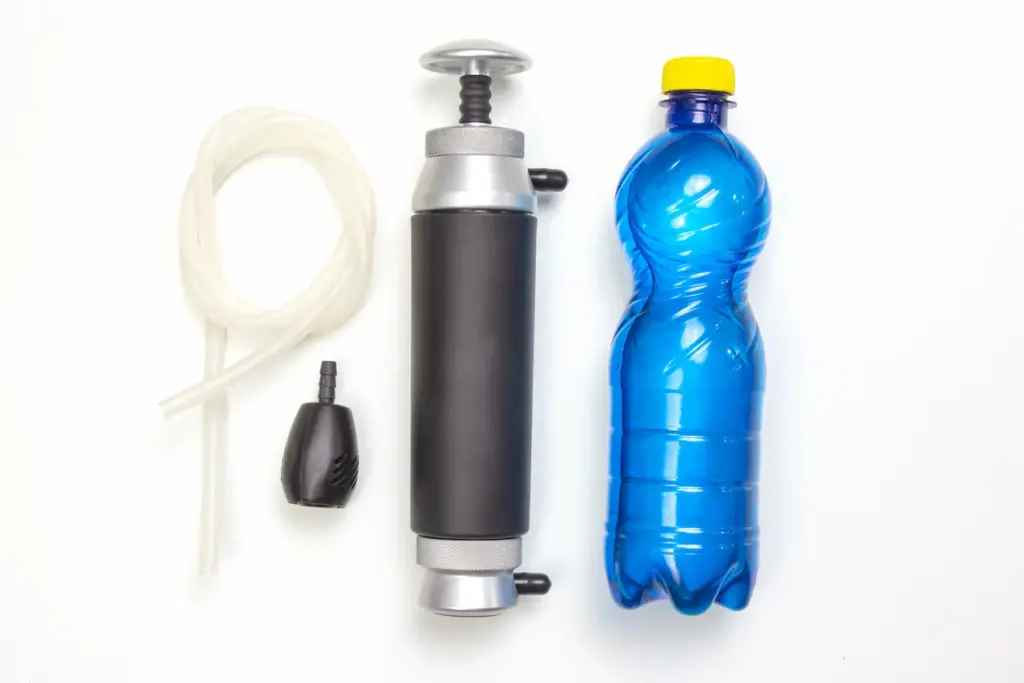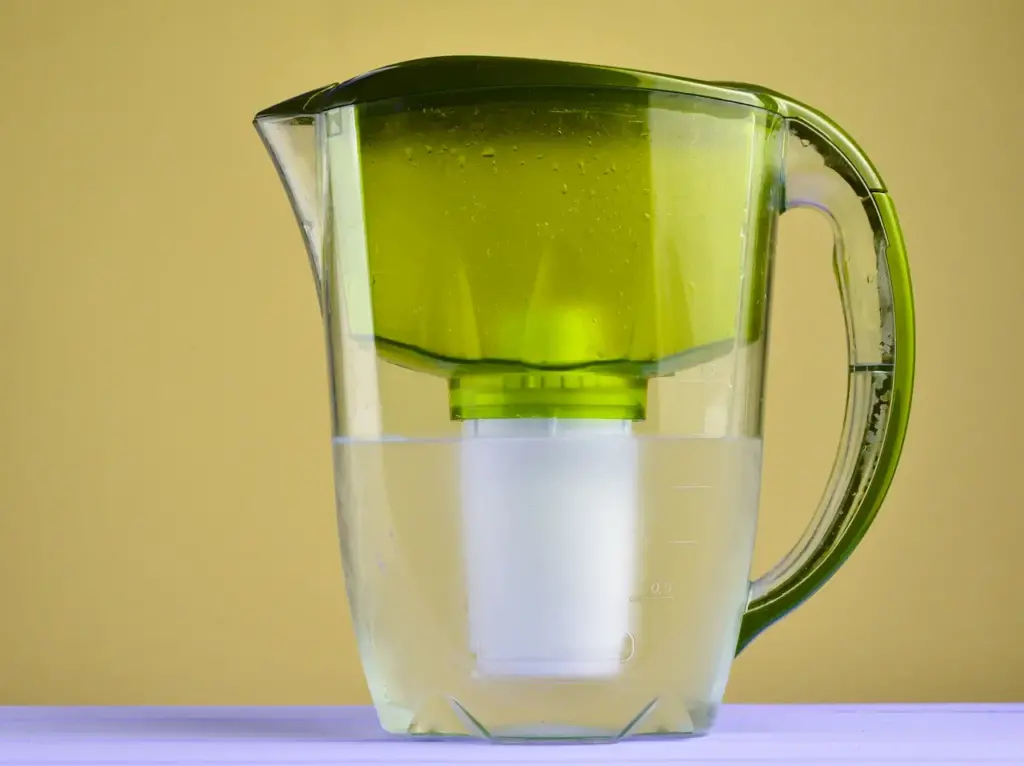Clean, safe drinking water is a basic necessity. But contaminants like chemicals, heavy metals and microplastics in tap and groundwater can pose health risks. A quality water filter removes these impurities, providing healthier hydration at home or on the go.
With so many types of filters on the market, this guide will walk you through the key factors to consider when choosing the best water filtration system for your needs and budget.

We’ll compare popular filter types like under-the-sink, countertop, faucet, pitcher, bottle and straw models. You’ll learn technical specifications like micron ratings, lifespan and flow rate.
Additional considerations like weight, capacity and special features will also be covered to help you select the ideal water filter for home, travel or outdoor use. Let’s dive in to demystify water filtration so you can drink easily with a filter you can trust.
Filter Types and Uses
Water filters come in a variety of configurations designed for specific uses:
Under Sink Filters
Under-sink water filters connect directly to your main water line for unlimited filtered water on demand. Convenient and effective, they’re one of the best options for whole-home filtration. Leading brands are Aquasana, Aqua Blue and Puretec.
Countertop Filters
Countertop filters sit on your kitchen counter or tabletop and connect to your faucet or supply line. They include pitchers or bottles combined with multistage filters. Culligan, Aquagear and Filtered make top countertop models.
Faucet Filters
These attach directly to your existing kitchen faucet. Simple to install, just turn on your faucet for instant filtered water. Leading faucet filter brands include Brita, PUR and Culligan.
Water Pitchers
Pitchers with built-in filters are affordable and easy to use. Fill them up in your sink, then refrigerate for great-tasting filtered water on hand. Pitchers from Brita, Clearly Filtered and Aqua Gear are customer favorites.
Water Bottles
Portable water bottles with filters are ideal for travel and outdoor activities. They filter from lakes, streams or taps for clean water on the go. LifeStraw, Grayl and Sawyer make top-rated portable filter bottles.
Water Straws
Similar to bottles, straw-style filters let you drink directly from lakes or rivers. No pumping or waiting – just sip filtered water through the straw. Leading brands are LifeStraw, Sawyer and Survivor Filter.
Micron Ratings
A filter’s micron rating determines what it traps – the lower the microns, the tinier the particles it removes. A good filter should remove contaminants down to at least 0.5 microns. The best trap particles as small as 0.1 or even 0.01 microns.
Filter Capacity
Determine how much water you need to filter. Smaller filters, like bottles, work for personal use. For families, opt for high-capacity pitchers or under-sink models that can handle more daily use. Check manufacturer specs for lifespan and flow rates.
Filtration Stages
More filtration stages mean more contaminant removal. Basic filters have 1 stage. Advanced systems have up to 7 stages combining activated carbon, UV light, reverse osmosis and more for maximum water purification.
Weight and Portability
If travelling or backpacking, lightweight straws, bottles or folding filters are ideal. For home use, pitcher and faucet filters are easy to move, but under-sink and countertop units are fixed installations.
Special Features
Keep an eye out for useful touches like filter change reminders, quick connect fittings for easy installation, recyclable parts and QR codes for filter authentication. The more convenience built in, the better.

Best Water Filter Reviews
Following are some of the best water filters with their reviews, pros and cons, to help you find yourself the perfect one.
Brita Marella Water Filter Jug Review
The Brita Marella is one of the best water filter jugs thanks to its effective filtration, portable design and recyclable filters. This BPA-free plastic jug can hold up to 3.5 litres of water for family use.
The Marella jug utilises Brita’s MAXTRA+ filters to reduce chemicals, chlorine, metals and scale found in tap water. Each filter lasts around 4 weeks or 150 litres before needing replacement. Conveniently, this jug includes 4 filters to start, so you’re covered for months of filtered water.
Once a filter expires, Brita’s recycling program allows you to mail back used filters to be responsibly recycled. This gives the Marella eco-friendly credentials beyond just great-tasting water. An LED light on the jug lets you know when it’s time to swap the filter.
The flip-top lid with silicone strap makes refilling a breeze. And at just 1.7 kg, the Marella jug is lightweight enough to move around the kitchen or take on picnics. For families seeking an effective and eco-friendly filtered water pitcher, the Brita Marella is hard to beat.
Pros
- Large 3.5-liter capacity
- Recyclable filters through the Brita program
- LED change filter indicator
- Lightweight at only 1.7 kg
Cons
- Filters need replacing every 4 weeks
Grayl Geopress Water Purifier Bottle Review
The Grayl Geopress is a sleek water purifier bottle that filters water incredibly fast for on-the-go hydration. It can remove virtually all particulates, chemicals, heavy metals, microplastics and odours from freshwater sources.
This BPA-free bottle holds 24 oz (710 ml) of water. Place it into any clear water source, press the one-button operation, and filtered water flows through in just 8 seconds – up to 5 litres per minute. The replaceable Grayl purifier cartridge lasts for 250 litres or about 3 months.
The used cartridges are fully recyclable through Grayl’s zero waste program, which recovers and recycles old cartridges into new materials. Weighing just 0.7 kg, the Geopress bottle is an ideal all-in-one water filtration system for travel, hiking, camping or emergency preparedness kits.
Pros
- Filters water in just 8 seconds
- Purifier cartridges recyclable after use
- Lightweight 0.7 kg bottle
- Removes virtually all contaminants
Cons
- Higher cost than basic bottles
Ecobud Gentoo Alkaline Water Filter Jug Review
The Ecobud Gentoo is one of the best alkaline water filter jugs, providing pH-balanced, mineral-rich water through a convenient countertop system. The sleek 1.5-litre jug weighs just 0.7 kg for easy portability.
Water passes through six stages of filtration, including an alkaline filter to remineralise and raise pH between 8.0 and 8.5. The Gentoo removes up to 99% of contaminants and leaves clean, healthy water.
The filter cartridge lasts for 600 litres or 3 months before needing easy replacement. An LED light reminds you when it’s time to change the filter. Ecobud provides recyclable and compostable filter components for low environmental impact.
For those seeking alkaline, purified water in a lightweight, eco-friendly package, the Ecobud Gentoo makes it easy and affordable to have enhanced, mineral-rich water always available.
Pros
- Six-stage alkaline filtration
- Remineralises water and raises pH
- LED change filter indicator
- Recyclable and compostable parts
Cons
- Smaller 1.5-liter capacity
Aqua Blue Under Sink Water Filter Review
The Aqua Blue under-sink water filter provides filtered water instantly with just the turn of a faucet. The system connects directly to the main water line under your kitchen sink for unlimited access to cleaner drinking water.
The quick-twist filter cartridge uses an advanced carbon block to reduce chlorine, pesticides, chemicals, heavy metals and other contaminants by over 99%. The LED faucet changes colour from blue to red when it’s time to replace the filter after 12 months of use.
With flow rates up to 0.5 litres per minute, the Aqua Blue can easily keep up with family usage. The under-sink installation frees up the refrigerator and counter space compared to pitchers. For an effective and convenient whole-home solution, the Aqua Blue under-sink filter delivers.
Pros
- Lasts 12 months or 15,000 litres
- LED faucet filter change reminder
- 0.5 litres per minute flow rate for the whole home
- Frees up counter space
Cons
- expert installation recommended
Katadyn Vario Water Filter Review
The Katadyn Vario is a versatile portable water filter ideal for camping, hiking or emergency preparedness. It can attach to bottles via a drinking tube, or to hydration packs through a hose.
This filter features a 3-level system including a cleanable ceramic pre-filter, replaceable activated carbon core, and microfilter that removes particles down to 0.2 microns. Easily switch between 1 and 2 litres per minute flow rates.
Weighing just 425 grams, the Vario is trail tough yet packs down small. The kit bundles the filter, drinking tube, carry case and field maintenance kit for on-the-go water filtration.
For wilderness adventures or foreign travel where water is questionable, the Katadyn Vario is an essential purification system.
Pros
- 3-stage filtration to 0.2 microns
- Flow rate up to 2 litres per minute
- Attaches to bottles or hydration packs
- Only 425 grams weight
Cons
- Not as portable alone as bottles
20L Maifan Stone Fluoride Water Filter Dispenser Review
This 20-litre countertop water dispenser utilises Maifan stone filtration to effectively remove fluoride and other contaminants for the whole family. The large BPA-free plastic reservoir holds enough filtered water to meet the needs of most households.
The 8-stage filter reduces fluoride content by over 90% while preserving healthy minerals. It also eliminates 99.9% of germs, heavy metals, chemicals and odours that may be present in tap water. The dispenser includes 3 Maifan fluoride filters that should be replaced every 6 months or 5000 litres.
With a generous 20-litre capacity, this dispenser can also accommodate offices, community centres or other shared spaces. The three included filters have an estimated lifespan of 1-2 years for an average family. Just flip up the easy-fill locking lid to refill the reservoir.
If you’re looking for substantial fluoride removal in a high-volume countertop system, this Maifan stone dispenser is an effective and affordable option for most households. The combination of advanced filtration and large capacity makes pure water always available.
Pros
- Large 20-litre reservoir
- Reduces over 90% of fluoride
- 8-stage filtration system
- 3 included Maifan filters
Cons
- Slow 0.3 litres per minute flow rate
- The countertop system is not as portable
Geekpure Under Sink Reverse Osmosis System Review
This Geekpure under-sink reverse osmosis system delivers premium filtration right from your kitchen faucet. The 6-stage RO filter removes up to 99% of contaminants for clean, refreshing water on demand. Installation is straightforward with the color-coded quick-connect fittings.
The RO membrane reduces particles down to 0.0001 microns, including lead, fluoride, chlorine and more. It then remineralises the water in the final alkaline stage, bringing the pH to a balanced level between 7.5 and 8.5. The smart LED faucet indicator lets you know when to change filters.
Made of durable alloy steel, brass and lead-free plastic, this under-sink RO system should provide up to 20 months of crisp-tasting water before filter replacement. For families seeking the highest quality filtration without sacrificing convenience, the Geekpure 6-stage system is an exceptional choice.
Pros
- 6-stage reverse osmosis filtration
- Remineralises to pH 7.5-8.5
- LED filter change indicator
- Lasts up to 20 months
- Durable metal construction
Cons
- Higher price point but pays off
LifeStraw Personal Water Filter Review
The LifeStraw personal water filter lets you drink directly from lakes, streams or taps for instant access to safe, clean drinking water. The hollow fibre membrane filters out 99.9999% of waterborne bacteria and 99.9% of protozoa parasites.
Weighing just 2 ounces, this portable filter is ideal for camping, hiking, travel and emergency preparedness kits. Its compact size takes up hardly any room in a pack or kit. No pumping, waiting or batteries are required – just place the LifeStraw into questionable water and sip away.
The filter cartridge lasts for up to 4000 litres of water – enough for years of typical use. With no shelf life, the LifeStraw retains effectiveness over time. For lightweight, grab-and-go water filtering, the LifeStraw is an essential companion in the wild or abroad.
Pros
- Removes 99.9% of waterborne bacteria
- Extremely lightweight at 2 ounces
- No pumping or batteries required
- 4000-litre filter lifespan
- No shelf life
Cons
- More costly than basic water bottles
Brita Flow Cask Dispenser Tap Review
The Brita Flow Cask Dispenser provides hot and cold filtered water with the touch of a tap. The BPA-free 8.2 litre reservoir has an ergonomic design that’s easy to fill and fits conveniently in the fridge.
The built-in electronic filter indicator tells you when to replace the cartridge, typically after around 150 litres or 6 weeks for an average family. The Brita MAXTRA+ filters this dispenser uses to reduce chlorine, metals, limescale and sediment.
With Brita’s trusted water filtration technology in a high-capacity countertop system, the Flow Cask Dispenser makes it simple for households to enjoy cleaner, great-tasting water for drinking and cooking. The dispenser tap allows you to fill glasses or pots without even moving the jug.
Pros
- Generous 8.2-liter capacity
- Built-in filter change reminder
- Dispenses water with the tap
- Reduces metals and chlorine
- Fits easily in the refrigerator
Cons
- Filters need to be replaced monthly

TKO Outdoor Water Filter Straw Review
The TKO Outdoor Water Filter Straw provides personal, on-demand water filtration for hiking, travel and emergency kits. The 4-stage filter removes over 99% of bacteria and protozoa from lake or stream water.
At just 3cm wide and 21cm long, this straw filter is highly portable. It includes a threaded base to connect to water bottles, plus an extension hose and collapsible pouch to hold unfiltered water. The impressive flow rate is 450 ml per minute.
For just-in-case purification on the trail or in the wild, the TKO Outdoor Straw is an affordable and compact solution. The 1500-liter cartridge lifespan provides up to 5 years of typical use. While not intended for daily home use, this straw could be a lifesaver in remote areas with questionable water sources.
Pros
- The 4-stage filter removes bacteria
- High 450 ml/minute flow rate
- Lightweight and portable size
- Threaded bottle adapter included
- 1500-liter filter lifespan
Cons
- Not for routine home use
Conclusion
Safe drinking water is vital no matter where you find yourself. With so many water filter types and technologies available today, be sure to match the filter to your needs. For home use, under-sink and countertop filters deliver convenient hydration for the whole family.
While camping or hiking, portable straws and bottles keep water pure on the go; take time to find the right balance of contaminant removal, convenience and value. Your body will thank you for drinking the cleanest, healthiest water possible.
That is why you must choose the best water filter that will suffice your needs. Also, this article gives you information about the best water filters., with their reviews, so that you can find yourself the best one.



